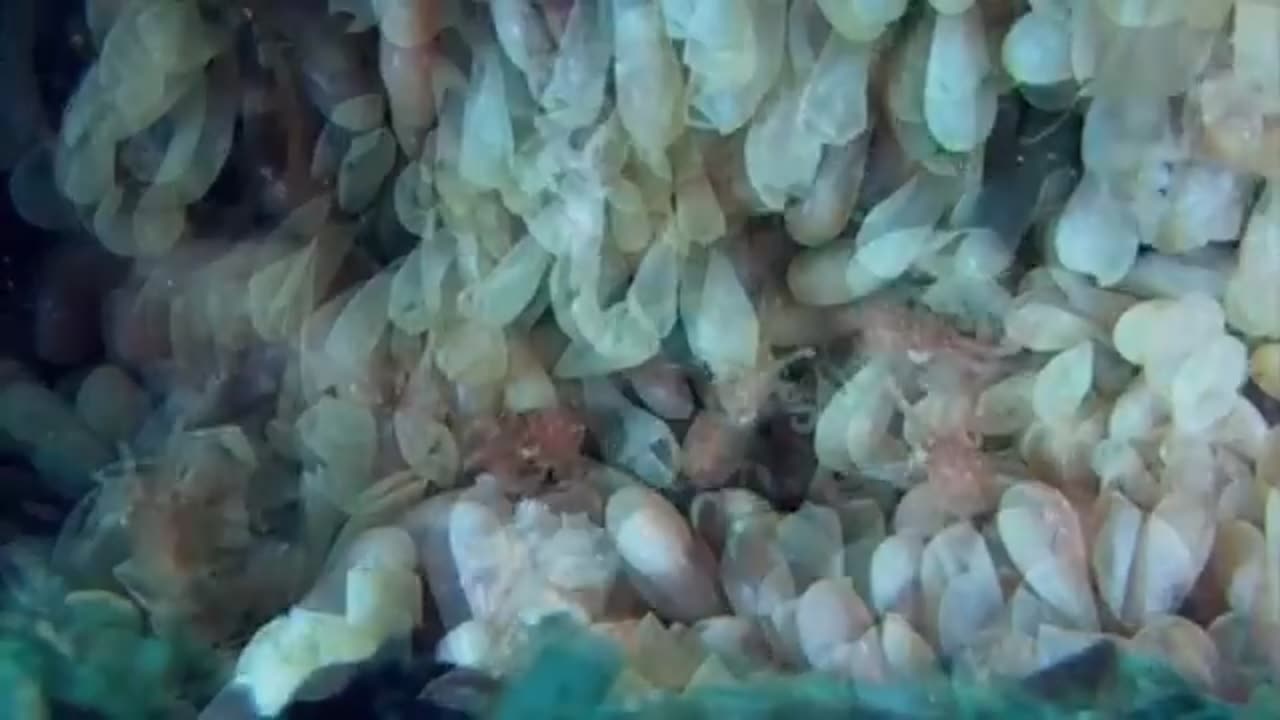Premium Only Content

Octopus egg
Octopuses are fascinating marine animals, but they don't lay eggs in the way many other creatures do. Octopuses are cephalopods, and their reproduction involves some unique characteristics. Here's a brief overview of octopus reproduction:
Mating: When it's time to reproduce, male and female octopuses typically engage in a courtship ritual. The male transfers a packet of sperm, called a spermatophore, into the female's mantle, where she stores it until she's ready to fertilize her eggs.
Egg-laying: Female octopuses lay their eggs in a protected location, such as a den or crevice. They carefully attach the eggs to the substrate, creating clusters of eggs known as egg strings. The number of eggs in a string can vary depending on the octopus species, but it can range from a few dozen to several hundred.
Egg protection: After laying the eggs, the female guards and cares for them diligently. She keeps the eggs clean and oxygenated by continuously blowing water over them. The female also prevents predators from approaching the eggs and may not eat during this period.
Senescence and death: Caring for the eggs is a physically demanding process for the female. As the eggs develop and hatch, the female's energy is gradually depleted. She may stop eating and become weaker. After the eggs hatch, the female octopus typically dies, as this marked decrease in energy expenditure during the brooding process is believed to be a natural part of their life cycle.
It's important to note that octopus reproduction can vary between different species, and the details may differ. Octopuses have a short lifespan, and many aspects of their life, including reproduction, are complex and interesting subjects of study in marine biology.
-
 LIVE
LIVE
TimcastIRL
42 minutes agoTrump Admin Accidentally Leaked War Plans To Liberal Journalist, But It May Be HOAX | Timcast IRL
27,863 watching -
 LIVE
LIVE
Glenn Greenwald
3 hours agoAtlantic Leak Reveals Trump Admin's Foreign Policy Mindset; Appeals Court Extremely Skeptical of Trump's El Salvador Deportation Powers; Israel's Horrific Crimes in the Last 24 Hours | SYSTEM UPDATE #428
14,588 watching -
 LIVE
LIVE
Dr Disrespect
8 hours ago🔴LIVE - DR DISRESPECT - TARKOV - ZERO TO HERO RAIDS ONLY
3,686 watching -
 LIVE
LIVE
The Jimmy Dore Show
2 hours agoBig Soda Buys Right Wing Influencers! Bill Maher Says Dems Are DONE! w/ James Corbett
12,563 watching -
 UPCOMING
UPCOMING
megimu32
1 hour agoON THE SUBJECT: The Soundtracks That Raised Us – Iconic Movie Music from the 80s, 90s & Y2K
18 -
 52:47
52:47
BonginoReport
3 hours agoDems Are LOST and The Biggest Losers Are Here To Help! (Ep. 11) - Nightly Scroll - 03/24/25
106K49 -
 53:58
53:58
Sarah Westall
2 hours ago“Millions and Millions have Died” Hidden Crimes of Big Pharma & Johnson & Johnson w/ Gardiner Harris
3.69K3 -
 1:40:49
1:40:49
Redacted News
4 hours agoSomething BIG is coming on April 2nd as Trump plans "Liberation Day in America" | Redacted News
188K213 -
 1:11:34
1:11:34
Kim Iversen
5 hours agoOops! Vance and Hegseth Accidentally Leak War Plans on Signal | Big WIN For Medical Freedom Movement
36.7K77 -
 1:06:30
1:06:30
TheSaltyCracker
4 hours agoSaltcast Stream 03-24-25
78.9K122